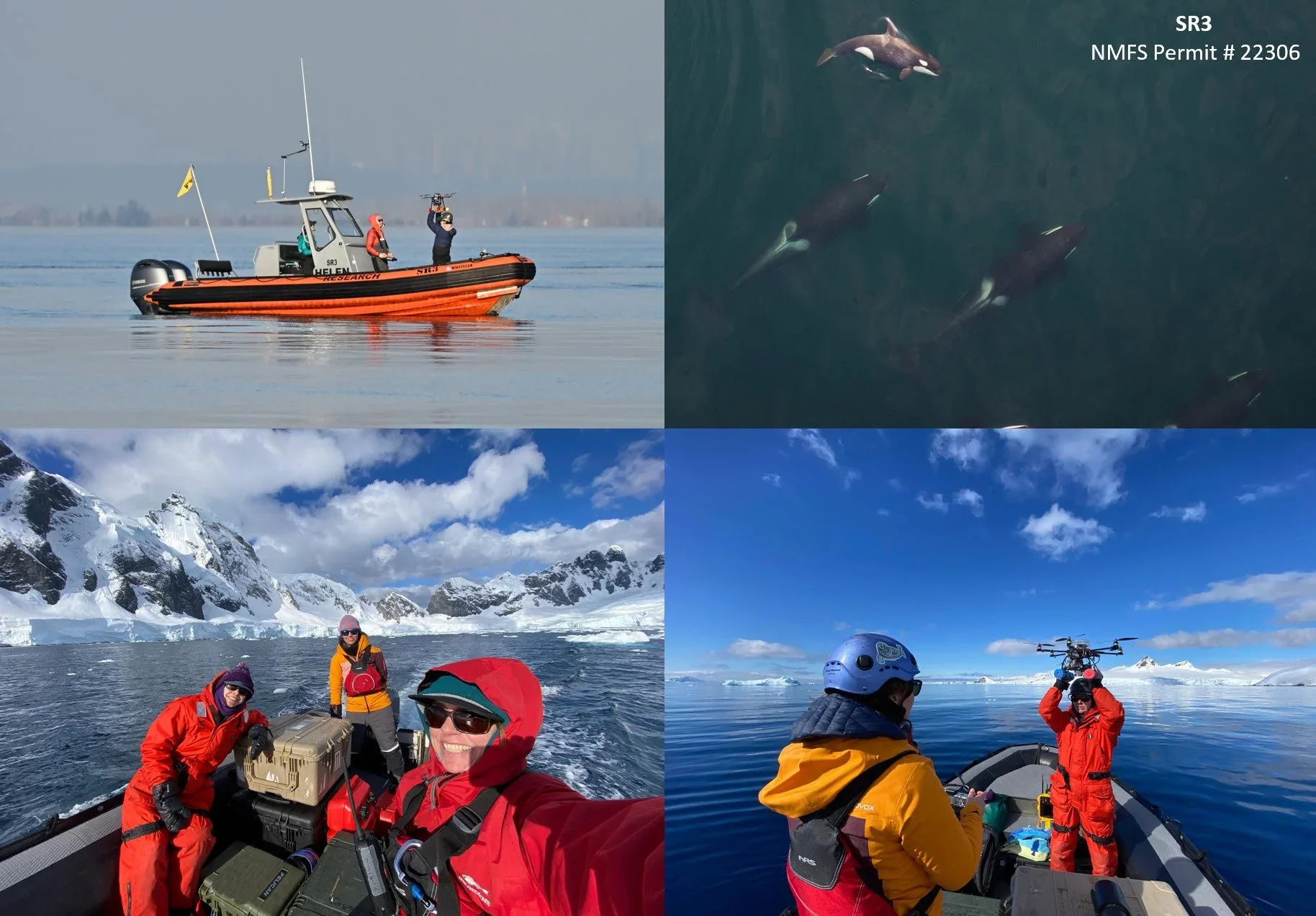SR3 Winter Salish Sea and Antarctic Research Update!
The SR3 team has been busy collecting valuable winter data on the health of killer whales in the Salish Sea. A remotely controlled multi-copter drone has been used to non-invasively collect aerial images of all 33 members of L pod from the endangered Southern Resident killer whales and an estimated 20 Bigg’s transient killer whales. SR3 has been extremely successful in collecting year-round data on both populations in recent years and these aerial images will be analyzed to assess seasonal changes and reproductive status in both populations, as well as estimate length and monitor growth. The team will continue collecting comparative data on killer whale condition throughout the year, to help guide conservation measures to maintain adequate year-round prey availability. SR3’s Holly Fearnbach and Sadie Youngstrom, joined by Jessica Farrer from The Whale Museum, are currently in Antarctica onboard the M/V National Geographic Explorer where they will continue SR3’s long-term research on the health of whales in the rapidly changing ecosystem of the Antarctic Peninsula. This research is supported by the Lindblad Expeditions-National Geographic Fund. More updates to come!
Top left: Photo of drone flight ops on SR3’s R/V Helen with Holly Fearnbach and Tess Chapman (SR3) and Jessica Farrer (The Whale Museum) during an encounter with Bigg’s transient killer whales in January 2025. Top right: Aerial image of members of L pod from the endangered population of Southern Resident killer whales in November 2024. Bottom left: Photo of Holly Fearnbach and Sadie Youngstrom (SR3) and Jessica Farrer (The Whale Museum) on a zodiac launched from the M/V National Geographic Explorer in the Antarctic Peninsula in February 2025. Bottom right: Jessica Farrer flying the drone out of the hands of Holly Fearnbach during an encounter with humpback whales in the Antarctic Peninsula in February 2025. Aerial images were collected non-invasively from > 100ft above the whales using a remotely-controlled hexacopter drone. Research conducted under NMFS Permit # 22306, DFO Research License XMMS 7 2023 and Antarctic Conservation Act Permit ACA 2017-029.

